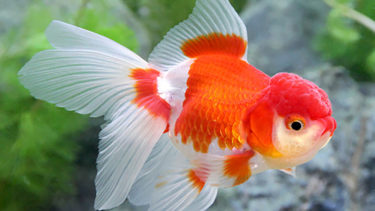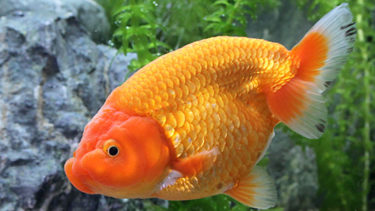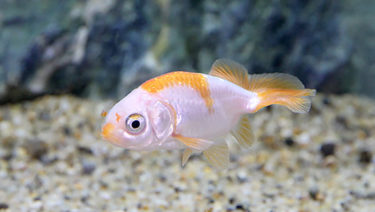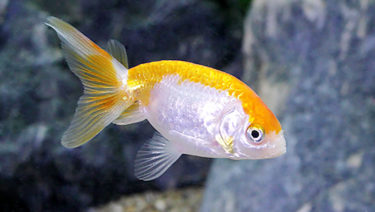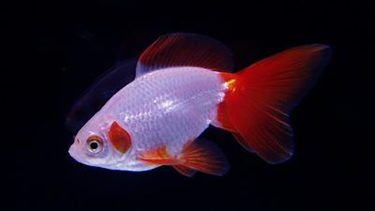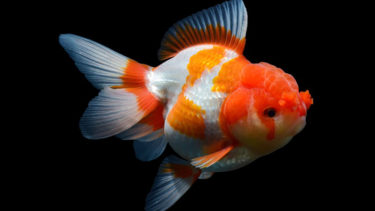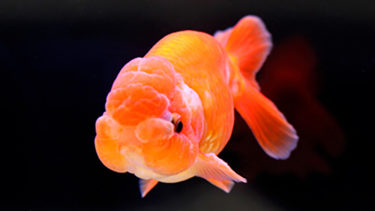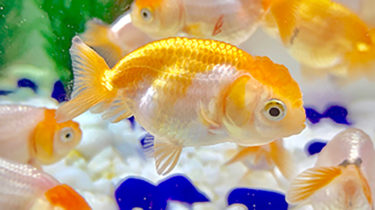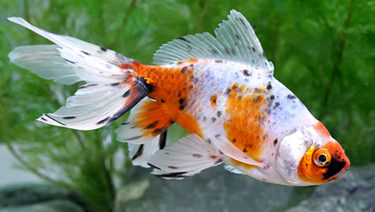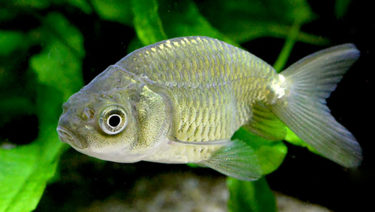The Akinishiki does not have a dorsal fin like the Ranchu strain, and the rest of the goldfish inherits the characteristics of the Dutch Shishigashira. In this article, we would like to explain in detail the characteristics of the Akinishiki and how to keep it.
What is Akinishiki?

The Akinishiki does not have a dorsal fin like the Ranchu strain, and the rest of the goldfish inherits the characteristics of the Dutch Shishigashira.So, many of them are Dutch wrens without dorsal fins. The Dutch wagtail is more closely related to the Dutch wagtail than the Ranchu, and many individuals have a firm fleshy mass. Also, individuals with Akishiki chintz tend to have a very well-defined red and white coloration. The Akishiki itself is not well known among goldfish breeds, so it tends to be favored by experts.
The orchid lionhead is a goldfish characterized by its caudal fin and head mass. It is a goldfish that can be kept in a variety of ways depending on its body color, the size of the fleshy mass on its head, and the way its tail fin spreads. In this article, we would like to explain in detail the characteristics of the Woran Shishigashira and how to keep it. What is the Woran lionfish [...]
The Ranchu is a goldfish with a well-developed fleshy head like the Dutch lionhead, but unlike other goldfish, it is unique in that it has no dorsal fin. In this article, we would like to explain in detail the characteristics of the Ranchu and how to keep it. What is Ranchu?
Origin of Akinishiki
Akinishiki was first introduced in 1892 by Kichigoro Akiyama I, who started breeding the dorsal-finless Holland Shishigashira by crossing Ranchu and Holland Shishigashira. After 10 years of work, the Akinishiki was announced as a new variety in 1900 (Meiji 33).It is said that Shinnosuke Matsubara named it after Kichigoro Akiyama, and named it Akinishiki. After a long time, it was said to have become extinct due to the fires of World War II and the confusion that ensued. Later, Mr. Kichigoro Akiyama III and Mr. Yazo Akiyama worked on restoring it and were able to produce an individual that is very close to Akinishiki. Mr. Yoshio Hirooka of Kawanishi City, Osaka Prefecture, has devoted 22 long years since 1956 to the restoration of Akishiki, and his efforts were published in Dr. Yoshikazu Matsui's book, "Color Books: Goldfish". He continued to make efforts to maintain the strain. Later, Mr. Takeyoshi Mukaizaka of Hohai-gun, Aichi Prefecture, also devoted himself to creating his own Aki-Nishiki. Today, most of the Akinishiki in circulation are produced by Fukami Fish Farm in Yatomi City, Aichi Prefecture. Mitsuharu Fukami and Yasunori Fukami maintain the strain.
Many people think that goldfish are the goldfish that you see at fairs and festivals in the summer, and that there are many different kinds of goldfish. And it is no exaggeration to say that each type of goldfish has its own characteristics, and that is the best part about goldfish [...]
How to enjoy Akinishiki
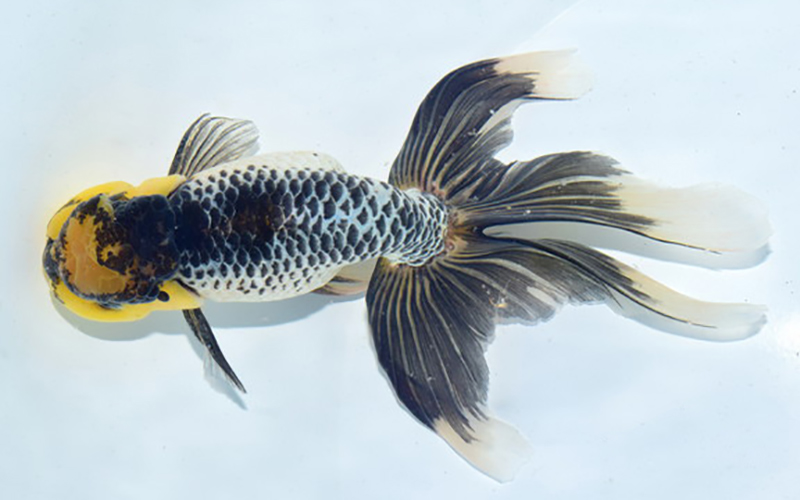
The best way to enjoy Akinishiki is to balance the dorsal finless part, which is a characteristic of the Ranchu strain, with the beautiful tail fin and the fleshy mass on the head of the Dutch Shishigashira. If you want to enjoy them, the method of viewing them from the side (side view) in an aquarium or the like is recommended.By viewing the fish from the side, you can enjoy the individual characteristics of each fish, from the head with its well-developed fleshy mass to the back without a dorsal fin and the beautiful tail fin. The chintz and other body colors can also be enjoyed in addition to the above. If you enjoy looking at them from the top, you can observe the balance between the left and right sides of the body, which is not so obvious when looking at them from the side.
Points to keep in mind when mixing swimmers
When mixing goldfish with other goldfish and other species, there is sometimes uncertainty as to what species is good and what species is not. First,There is no general prohibition against this or that when mixing goldfish with other species.Therefore, depending on the personality and environment of the goldfish you keep, even species that are said to be bad for each other may get along well with each other. However, there is also the matter of compatibility between goldfish. If you put incompatible goldfish together, there is a high possibility that they will fight or that only one of them will monopolize the food. However, as explained in the beginning, there is no prohibition for goldfish, so if you want to mix them, it may be OK to do so. Now, let us explain which goldfish are compatible with Japanese goldfish and which are not.
Compatible goldfish
Goldfish that go well with Akinishiki are Dutch-type goldfish such as the Dutch lionhead and Azumanishiki.Since the Akishiki is a breed with a well-developed head mass, we recommend that you compare the head mass that develops as it grows with a Dutch type goldfish, which also tends to have a well-developed head mass.
About the Woran Lion Head
About Us
About Dutch Type
Incompatible goldfish
Goldfish that are incompatible with Akinishiki are Japanese goldfish, such as Wakin (Japanese goldfish) and Comet (Japanese goldfish).Many Japanese goldfish are agile and grow large in a short period of time. If you mix Akinishiki with Japanese goldfish, please be aware that Akinishiki may be eaten by other Japanese goldfish and the difference in body size may cause them to move apart.
About WAKIN
About Comet
About Us
Points to keep in mind when keeping Akishiki
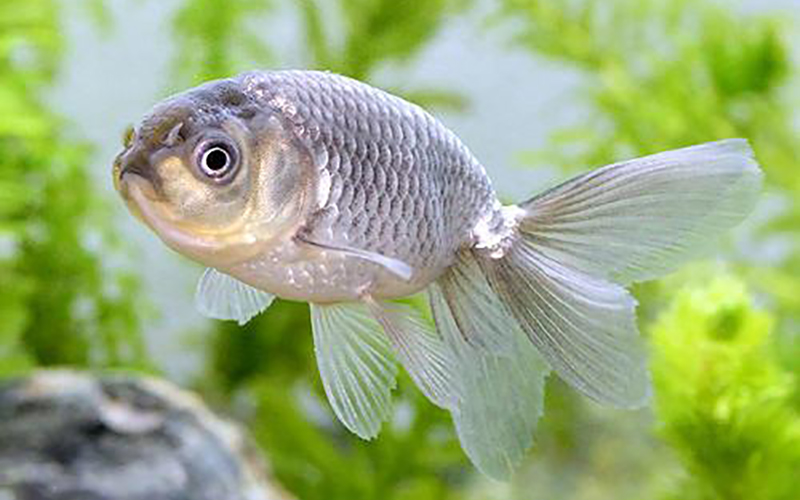
Although the method of keeping Akinishiki is not so different from that of Holland's Shishigurashi, the number of breeders of Akinishiki is still smaller than that of other major breeds. Therefore, those who are interested in keeping Akinishiki should find a way to keep it by themselves.In most cases, Akinishiki is distributed in very small quantities and is handled only by a few specialty stores, so we recommend that you ask the shopkeeper if it is in stock. The most interesting thing about Akishiki is that it is not yet in its finished form. Originally, the Akishiki was created as a Dutch Shishigashira without a dorsal fin, but due to its tortuous history, it is said that it has not yet reached its perfected form, so if you are interested in trying your hand at breeding it, please do so.


